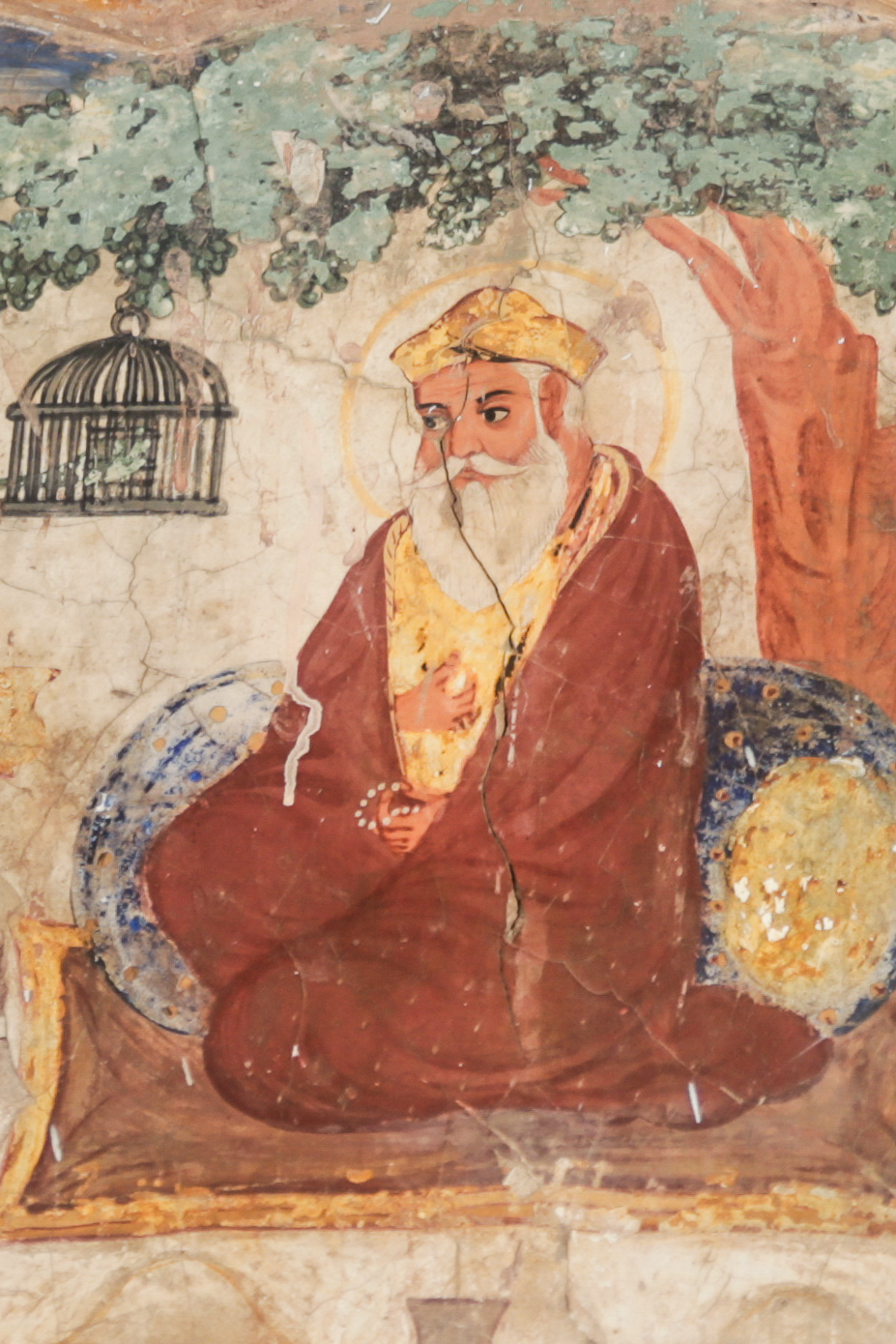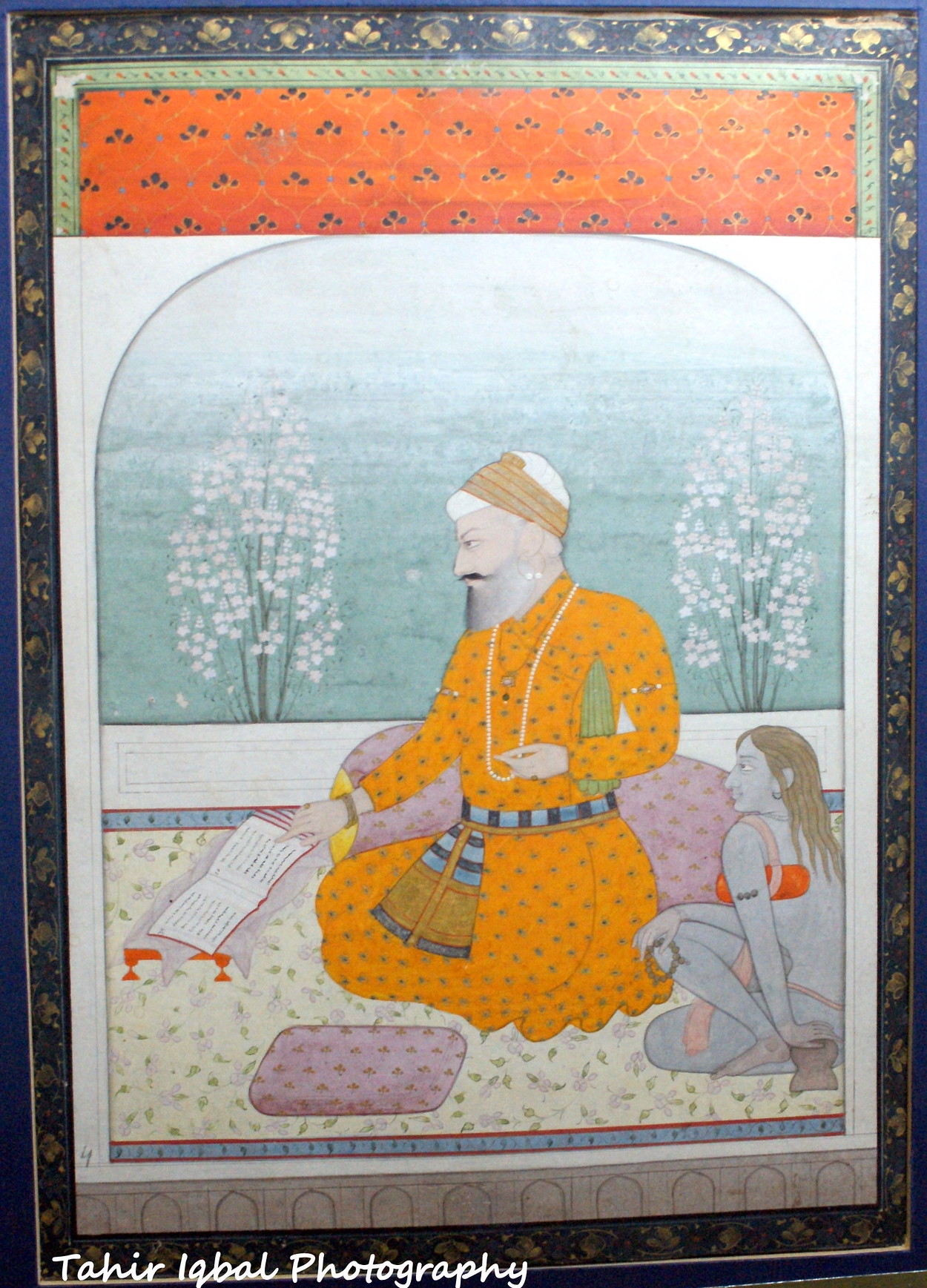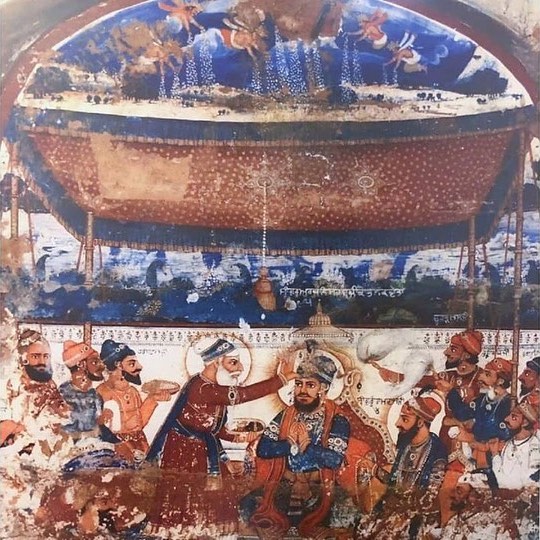|
List Of Khatris
Following is a list of notable members of the Khatri community in India. Historical figures Sikhism * Sikh Gurus ** Guru Nanak Dev Bedi, founder of Sikhism ** Guru Angad Dev, Trehan ** Guru Amar Das, Bhalla ** Guru Ram Das, Sodhi ** Guru Arjan Dev, Sodhi ** Guru Har Gobind, Sodhi ** Guru Har Rai, Sodhi ** Guru Har Krishan, Sodhi ** Guru Tegh Bahadur, Sodhi ** Guru Gobind Singh, Sodhi, founder of Khalsa * Bhai Daya Singh, Bhai Daya Singh Sobti, the first of the Panj Pyare (the initial members of the Khalsa), belonged to the Sobti clan of the Khatris * Sri Chand, Baba Sri Chand was the founder of the ascetic sect of Udasin and was the elder son of Guru Nanak, first Guru and founder of Sikhism. * Prithi Chand, Baba Prithi Chand Sodhi (1558–1618), the eldest son of Guru Ram Das after the younger brother Guru Arjan was the founder of the Mina sect. * Bhai Gurdas (1555–1636), a Bhalla Khatri who served as the first Jathedar of the Akal Takht, Jathedar of Akal Takht and the fi ... [...More Info...] [...Related Items...] OR: [Wikipedia] [Google] [Baidu] |
Khatri
Khatri () is a caste system in India, caste originating from the Malwa (Punjab), Malwa and Majha areas of Punjab region of South Asia that is predominantly found in India, but also in Pakistan and Afghanistan. The Khatris claim they are warriors who took to trade. In the Indian subcontinent, they were mostly engaged in mercantile professions such as banking and trade. They were the dominant commercial and financial administration class of late-medieval India. Some in Punjab often belonged to hereditary agriculturalist land-holding lineages, while others were engaged in artisanal occupations such as silk production and weaving. Khatris of Punjab, specifically, were scribes and traders during the medieval period, with the Gurmukhi, Gurumukhi script used in writing the Punjabi language, Punjabi language deriving from a standardised form of the Lahnda, Lāṇḍa script used by Khatri traders; the invention of the script is traditionally ascribed to Guru Angad. During the mediev ... [...More Info...] [...Related Items...] OR: [Wikipedia] [Google] [Baidu] |
Sri Chand
Sri Chand ( Gurmukhi:: ਸ੍ਰੀ ਚੰਦ; born 8 September 1494, traditional death date 13 January 1629), also known as Baba Sri Chand or Bhagwan Sri Chandra, was the founder of the Udasi sect of ascetic Sadhus. ***While Sikh and Udasi traditions commonly state that he lived from (1494 to 1629), which would imply a lifespan of 134 years, this figure is likely symbolic, as there is no contemporary historical documentation to independently verify the exact year of his death. Early life He was the eldest son of Guru Nanak, the first Guru and founder of Sikhism. He was born to Mata Sulakhani on Bhadra sudi 9, 1551 Bikrami (i.e. 8 September 1494) in Sultanpur Lodhi. Whilst Guru Nanak was out on his long travels, Sri Chand's mother took him and his younger brother to her parental house located in the village of Pakkhoke Randhawa (located in present-day Dera Baba Nanak). As Sri Chand matured, he became a spiritually-inclined individual who grew to be indifferent to worldl ... [...More Info...] [...Related Items...] OR: [Wikipedia] [Google] [Baidu] |
Nirankari
Nirankari (, ''lit.'' "formless one") is a Sects of Sikhism, sect of Sikhism.Harbans Singh, Editor-in-Chief (201Nirankaris Encyclopedia of Sikhism Volume III, Punjabi University, Patiala, pages 234–235 It was a reform movement founded by Baba Dyal Singh, Baba Dyal Das in northwest Punjab in 1851. He sought to restore the practices and beliefs of Sikhs back to what he believed were prevalent when Guru Nanak was alive. This movement emerged in the aftermath of the end of Sikh Empire and the Sikh history after Ranjit Singh's death. Nirankaris strongly oppose representing the "formless" God with any image, and believe that the true Sikh faith is based on ''nam simaran'' (remembering and repeating God's name). They believe in living hereditary gurus from Baba Dyal Das lineage, and that the Sikh scripture is an open text to which the wisdom of their living gurus after Guru Gobind Singh can be added. Nirankaris believe that a human guru to interpret the scripture and guide Sikhs is ... [...More Info...] [...Related Items...] OR: [Wikipedia] [Google] [Baidu] |
Baba Dyal Singh
Baba Dayal (17 May 1783 – 30 January 1855), also spelt as Baba Dyal, was a non-Khalsa, Sahajdhari Sikh reformer whose main mission was to bring Sikhs back to the Adi Granth and Simran. He was the founder of the Nirankari sect of Sikhism. Biography Early life Dyal Singh was born in Peshawar on 17 May 1783 and was the son of a banker named Ram Sahai and Ladikki, daughter of Vasakha Singh of Rohtas. His father died while he was a baby. Growing up, he was educated in Gurmukhi, Persian, and Pashto. Religious career After the death of his mother in 1802, he moved to Rawalpindi, where he worked as a grocer. It is during this time that his religious preaching began to the local Sikh congregations at two gurdwaras. At the age of 18, it is claimed he heard a voice inside his head telling him to preach against ritualism, expel the darkness of ignorance, and that he was the true Nirankari. This event is taken as a sign of enlightenment. His message was that ritualism and pract ... [...More Info...] [...Related Items...] OR: [Wikipedia] [Google] [Baidu] |
Radha Soami
Rādhā Soāmī Mat or Sant Mat is a sampradaya, spiritual tradition or faith founded by Shiv Dayal Singh in January 1861 on Basant Panchami Day in Agra, India. p. 90 note 5, Quote: "The date of Seth Shiv Dayal's first public discourse is Basant Panchami Day, February 15, 1861"., Quote: "The movement traces its origins to Seth Shiv Dayal Singh, who began his public ministry in Agra in 1861." Shiv Dayal Singh's parents were Vaishnavism, Vaishnava Hindus, followers of Guru Nanak of Sikhism, and were also followers of a spiritual guru from Hathras named Tulsi Sahib. Shiv Dayal Singh was influenced by the teachings of Tulsi Sahib, who taught Surat Shabd Yoga, Surat Shabd Yoga (which is defined by Radha Soami teachers as “union of the soul with the divine, inner sound”); guru bhakti (“devotion to the master”); and high moral living, including a strict lacto-vegetarian diet. Shiv Dayal Singh frequently accompanied Tulsi Saheb, but did not take initiation from him. The movem ... [...More Info...] [...Related Items...] OR: [Wikipedia] [Google] [Baidu] |
Shiv Dayal Singh
Shiv Dayal Singh (25 August 1818 – 15 June 1878), known by the honorific "Param Purush Puran Dhani Huzur Soami Ji Maharaj" by his disciples and devotees, was an Indian spiritual guru and founder of Radha Soami, a 19th-century spiritual sect. Early life The parents of Shiv Dayal Singh were residents of Punjab, but moved to Agra before his birth at the behest of the colonial British government who had set up a major military center there and relied heavily on Sikhs from the Punjab region to staff the base. At the age of five, Shiv Dayal Singh was sent to school where he learnt Hindi, Urdu, Persian language, Persian and Gurumukhi, Arabic and Sanskrit. His father, Seth Dilwali Singh was a Sahejdhari Khatri. His mother's name was Mata Maha Maya. He had two brothers named Seth Partap Singh (alias Chachaji Saheb) and Seth Rai Bindraban. His marriage to Mata Naraini Devi (later called "Radha Ji" by followers and devotees), daughter of Lala Izzat Rai of Faridabad was arranged at an ... [...More Info...] [...Related Items...] OR: [Wikipedia] [Google] [Baidu] |
Baba Ram Rai
Ram Rai (Gurmukhi: ਰਾਮ ਰਾਏ; ''rāma rā'ē''; 1645–1687) was the excommunicated eldest son of the seventh Sikh Guru, Guru Har Rai, and the founder of the Ramraiyas, an unorthodox and heretical sect in Sikhism. Biography Marriages He had four wives, Raj Kaur (d. 1698), Maluki (d. 1701), Panjab Kaur (d. 1742), and Lal Kaur (d. 1698). Excommunication After Sikhs assisted the fleeing Dara Shikoh in the aftermath of the Battle of Samugarh, Aurangzeb demanded that the Sikh Guru explain his actions. Ram Rai was chosen by his father to represent him in the Mughal darbar (court) to explain why he had supported and given refuge to Dara Shikoh, during the Mughal war of succession. During this meeting, the emperor complained that a verse from the '' Adi Granth'' was "anti-Islamic", in-response to this claim by the emperor, Ram Rai altered the words of the verse, which changed the context, instead of standing firm to his faith entirely. This had pleased the emperor. ... [...More Info...] [...Related Items...] OR: [Wikipedia] [Google] [Baidu] |
Guru Granth Sahib
The Guru Granth Sahib (, ) is the central holy religious scripture of Sikhism, regarded by Sikhs as the final, sovereign and eternal Guru following the lineage of the ten human gurus of the religion. The Adi Granth (), its first rendition, was compiled by the fifth guru, Guru Arjan (1564–1606). Its compilation was completed on 29 August 1604 and first installed inside the Golden Temple in Amritsar on 1 September 1604. Baba Buddha was appointed the first Granthi of the Golden Temple. Shortly afterwards Guru Hargobind added Ramkali Ki Vaar. Later, Guru Gobind Singh, the tenth Sikh guru, added hymns of Guru Tegh Bahadur to the Adi Granth and affirmed the text as his successor. This second rendition became known as the Guru Granth Sahib and is also sometimes referred to as the Adi Granth.Adi Granth Encyclopaedia Brit ... [...More Info...] [...Related Items...] OR: [Wikipedia] [Google] [Baidu] |
Jathedar Of The Akal Takht
The Jathedar of the Akal Takht () is the head of the Akal Takht and head of the Sikhs worldwide. The jathedar has the de facto power as the supreme spokesperson of the Khalsa to Summons, summon, trial, try and sentence (law), sentence any person who identifies as a Sikh from the Akal Takht. The current jathedar, Kuldeep Singh Gargaj, was appointed by the Shiromani Gurdwara Parbandhak Committee (SGPC) on 7 March 2025. Jagtar Singh Hawara, was declared jathedar of the Akal Takht by the Sarbat Khalsa#Sarbat Khalsa 2015, Sarbat Khalsa on 10 November 2015 due to the imprisonment of Hawara, Dhian Singh Mand appointed by the Sarbat Khalsa has been serving as the acting jathedar. The jathedars of the Takht (Sikhism), five takhts generally make important decisions in consultation within the framework of the Sikh Rehat Maryada while considering the collective will of the Sikhs. The position of jathedar is not established by any constitutional document, but exists only by long-established ... [...More Info...] [...Related Items...] OR: [Wikipedia] [Google] [Baidu] |
Bhai Gurdas
Bhai Gurdas (1551 – 25 August 1636) was a Sikh writer, historian and preacher who served as the Jathedar of the Akal Takht from 1606 to his death in 1636. He was the original scribe of the early version of Guru Granth Sahib, having served as the amanuensis of Guru Arjan in its compilation. Early life Bhai Gurdas was possibly born in 1551 (exact year unknown but likely between 1543 and 1553) at Basarke Gillan, a small village in the Punjab. He was the only child of Bhai Ishar Das and Mata Jivani. Gurdas' father, Ishar Das, was the youngest brother of Guru Amar Das, therefore Gurdas was the nephew of Guru Amar Das. Gurdas was born into the Bhalla clan of Khatris. Bhai Gurdas was near 3 years of age when his mother died.Bhai GURDAS (1551–1636) – SikhHistory.com After being orphaned at the age of 12, he was ado ... [...More Info...] [...Related Items...] OR: [Wikipedia] [Google] [Baidu] |
Guru Arjan
Guru Arjan (Gurmukhi: ਗੁਰੂ ਅਰਜਨ, pronunciation: ; 15 April 1563 – 30 May 1606) was the fifth of the ten total Sikh Gurus. He compiled the first official edition of the Sikh scripture called the Adi Granth, which later expanded into the Guru Granth Sahib. He is regarded as the first of the two Gurus martyred in the Sikh faith. Guru Arjan was born in Goindval, in the Punjab, the youngest son of Bhai Jetha, who later became Guru Ram Das, and Mata Bhani, the daughter of Guru Amar Das. He completed the construction of the Darbar Sahib at Amritsar, after the fourth Sikh Guru founded the town and built a sarovar. Arjan compiled the hymns of previous Gurus and of other saints into Adi Granth, the first edition of the Sikh scripture, and installed it in the Harimandir Sahib. Guru Arjan reorganized the masand system initiated by Guru Ram Das, by suggesting that the Sikhs donate, if possible, one-tenth of their income, goods or service to the Sikh organization ... [...More Info...] [...Related Items...] OR: [Wikipedia] [Google] [Baidu] |
Prithi Chand
Prithi Chand (Gurmukhi: ਪ੍ਰਿਥੀ ਚੰਦ; 1558–April 1618), also spelt as Prithia, was the eldest son of Guru Ram Das – the fourth Guru of Sikhism, and the eldest brother of Guru Arjun, Guru Arjan – the fifth Guru.Minas, Masands, Dhir Malias, Ram Raiyas Overview of World Religions, PHILTAR, University of Cumbria (2011) He founded the heretical Mina (Sikhism), Mina sect of Sikhism. Prithia based his movement out of Heir village, located in present-day Lahore district in Punjab, Pakistan. Spiritual career Attempt at inheriting the Sikh guruship Prithia wanted to inherit the Guru Gaddi, Sikh guruship from his father, Guru Ram Das, who instead favored and appointed his youngest son ...[...More Info...] [...Related Items...] OR: [Wikipedia] [Google] [Baidu] |









